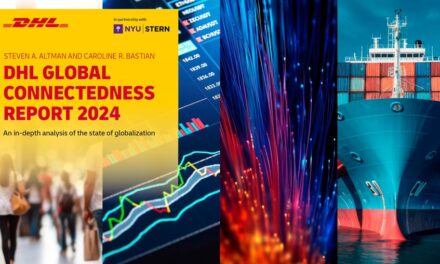
Study: Trade growth to rely more on incomes in Asia
Growth of trade will rely more on rising incomes in Asia than growth in the West.
Growth of trade will rely more on rising incomes in Asia than growth in the West, according to a study conducted by the Economist Intelligence Unit (EIU) at the behest of global express and logistics company DHL.
A key finding of the study shows that the link between income and trade is stronger between Asia and the West than between North America and Europe. A 1% increase in combined income between an Asian country and a Western country will deliver 1.36% increase in trade.
Trade between Asean and the West will rise 1.35% for every 1% increase in combined income, compared to trading relationship between two Western countries – a 1% increase in combined income delivers a 1.14% increase in trade.
Frank Appel, CEO of Deutsche Post World Net, parent company of DHL, said: “The study reveals the slowing Asian growth story and the need to rebalance their economies. The challenge that Asian trade faces today is to hasten the migration to high-value goods and focus on managing their growing dependence on oil.”
“The impact of rising oil prices will add risks and negatively impact Asian international trade. The study also reveals that for 2009 and beyond, international trade will depend more on rising Asian incomes, than the West.”
The EIU report, entitled Fuelling Global Trade: How GDP Growth and Oil Prices Affect International Trade Flows, looked at trade flows between 39 countries in three regions: Asia, the European Union and the North America Free Trade Agreement (Nafta).
The study, based on a five-year forecast, includes three countries which are part of Nafta (US, Canada and Mexico), 25 European Union countries, six largest economies in Asean along with Japan, South Korea, India, China and Hong Kong in Asia.
Another key finding shows that based on an average of all the 383 bilateral trade relationships in the study, a 1% increase in oil price leads to a 0.24% reduction in trade, with the assumption that all other drivers, such as income levels in two countries, remain constant.
The study finds that high oil prices have the greatest effect on Southeast Asia, where trade decreases the most.
The impact on oil prices is much greater when an Asean country trades with a nation in the EU or Nafta – a 1% increase in the price of oil reduces the value of trade by 0.3%. Assuming no rise in income levels, the value of trade between Asean and the West would fall by 30% over five years if oil prices doubled, as in 2008.
The larger impact of high oil prices on Asia, Asean in particular, is due to the types of goods being traded.
The study found that in West-to-West trade, there is a higher proportion of ‘high-value’ goods such as computers, aircraft and media devices, and a smaller share of ‘low-value’ goods such as coal and gas, coconuts, palm oil, and textiles and shoes.
In contrast, Asia nations are likely to have a much higher proportion of trade centred on low-value goods. Since transport costs make up a larger share of the final cost of low-value goods than they do for high-value goods, rising oil prices have a larger impact on trade growth for Asia.
DHL said this was the third time DHL has commissioned EIU to conduct a market study on trade flows, and the scope continued to include regions outside Asia Pacific to gain deeper insights into international trade issues.













